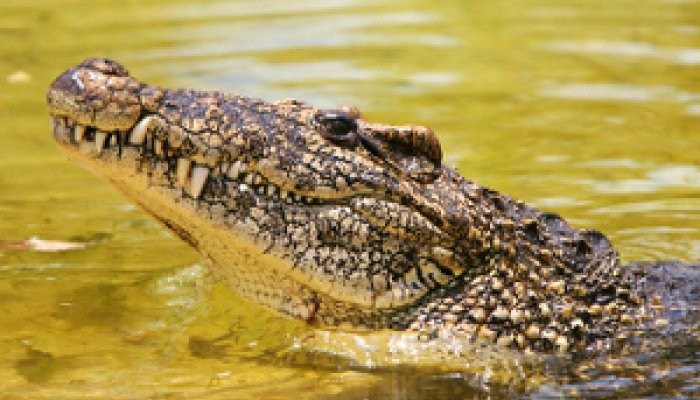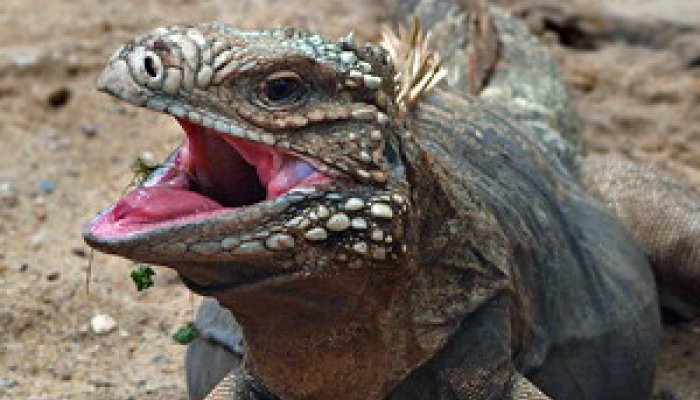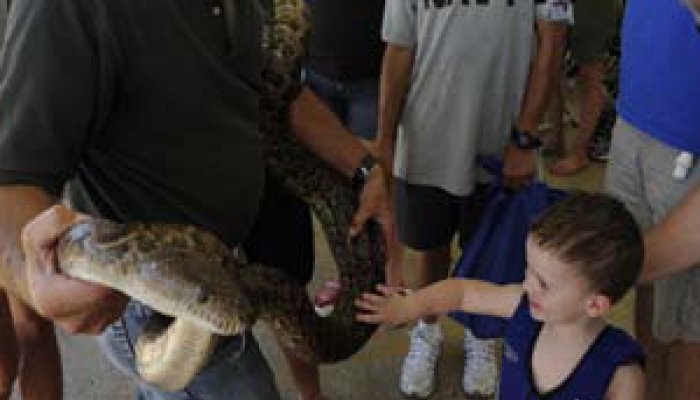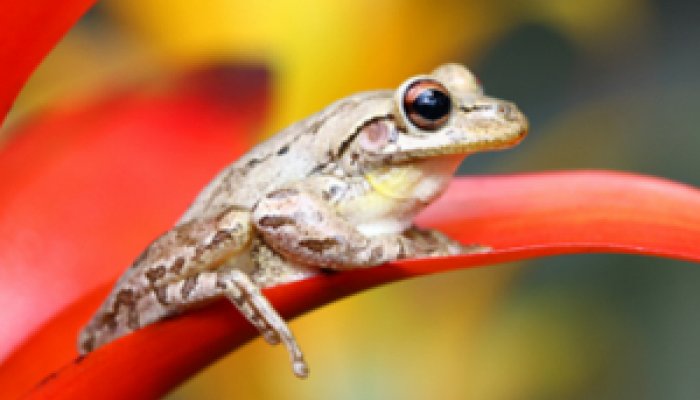Cuba has over 136 species of reptiles, and about 80% of them are endemic. Over half of the reptiles, about 90 species, are actually lizards. However, the Cuban rock iguana tends to be the most prominent on the island.

Cuban Crocodile
The Cuban crocodile could once be found roaming Cuba, but they can now only be found in the Zapata Swamp. In fact, they now hold the distinction of being the most endangered species of the New World crocodiles. Currently, the endangered crocodiles are losing their genetic identity due to their interbreeding with their more prolific relation, the American crocodile. These hybrid offspring are gradually losing their Cuban crocodile genomes, and their genetics are being gradually swamped. Researchers believe that the loss of this unique genetic lineage may reduce the crocodiles’ ability to adapt to environmental stresses in the future.
These crocodiles can live up to 50-75 years, though they do not reproduce often. In the Zapata Swamp, you can often see them swimming or occasionally wandering around the shores.

Cuban Rock Iguana
Many consider the Cuban rock iguana to be one of the most impressive iguana species due to its size. The Cuban iguana reaches 4-5 feet and can weigh around 15 pounds, which makes it the largest of the West Indian rock iguanas. These iguanas can be dark gray or brown, and they all have noticeable banding. Many consider them good pets with their affable attitudes, particularly because they live around 15 years.
In Cuba, you can find them climbing trees or scampering around Cuba’s limestone formations. However, they also enjoy sleeping in burrows and other quiet spots. If you’re lucky, you can see the spectacular sight of the Cuban iguanas jumping from a tree to the water, which they are known to do, to enjoy a brisk swim using their powerful tails as a form of locomotion.
Though this group is one of the most endangered species of lizards in the world, the Cuban iguana is not technically considered endangered. However, it suffers from habitat loss as well as predation by nonnative species such as domestic cats, dogs, and pigs.
Fun Fact:
Due to their weakened vertebrae, an iguana can break free from its tail if caught as an escape strategy.

Cuban Boa
The Cuban boa is the largest species in its genus as well as the largest snake inhabiting the West Indies; in fact, it's the largest vertebrate in the West Indies as they can be over 15 feet long. For food, they tend to eat other prominent vertebrate, including the Cuban rock iguanas and the hutias. With this status, the Cuban boa is generally acknowledged to be the island’s largest land predator—a role which makes it a keystone to Cuba’s ecosystem.
In western Cuba, the boas tend toward bold, brown or black markings on its body. However, eastern Cuban boas tend toward paler colors with less distinct markings. With their tendency to be arboreal, you can often find their bodies tangled around a tree limb though as they age they begin to prefer holes and rock piles as their dominant habitat.

Cuban Treefrog
In one of those twists of fate, the Cuban treefrog is actually considered an invasive exotic species in Florida because the Cuban treefrogs are incredibly successful at taking over other native ecosystems. Cuban treefrogs have gained some notoriety for their diet, which consists of other frogs, toads, and lizards. Their diet is one of the reasons they are a threat to other wildlife in North America.
The Cuban treefrog is the largest treefrog in North America, and they are expanding their range northward. In Cuba, you can find them in residential areas, particularly in more moist locales. It’s a nocturnal species, however, so you will not catch sight of them during the day.
Fun Fact:
When a treefrog swallows its meal, its eyeballs close and recede into its head. Once there, the eyeballs exert pressure to push the food down the frog’s throat.

